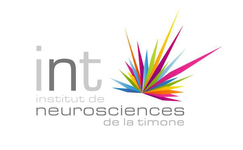Une Réunion Mensuelle de Neuroimagerie a eu lieu jeudi 15 Mai de 10h à 12h exceptionnellement dans la salle Henri GASTAUT (RdC de l’INT) (plan d’accès). Au programme :
- 9:30: Accueil café suivi par deux séminaires :
- Camille Pluchot & Scott Love (INRAE, CNRS, Université de Tours, PRC) : « Neuroimagerie fonctionnelle chez le mouton éveillé » Télécharger le pdf (3Mo)
- Camille Grasso (Cognitive Neuroimaging Unit, CEA DRF/I2BM, INSERM, Université Paris-Sud, Université Paris-Saclay, NeuroSpin Center, Gif/Yvette, France) : « How do we perceive time, and how does the brain encode durations? » Télécharger le pdf (46Mo)
Camille Grasso’s abstract: How do we perceive time, and how does the brain encode durations? In this talk, I will present two complementary research projects that tackle these questions by combining behavioral, electrophysiological, and computational approaches. The first project uses virtual reality to manipulate spatial constraints and examine their effect on temporal perception. Participants produced durations in large vs. small virtual environments while EEG was recorded. Time-resolved decoding and temporal generalization analyses revealed that the neural representation of durations is distorted by environmental scale, with early modulations during production phase, suggesting that environmental context shapes how the brain processes duration. The second project explores the geometry of duration representation. Going beyond the classic « mental timeline » hypothesis, I combined behavioral similarity judgments and EEG-based representational similarity analysis (RSA) to reconstruct the conceptual and neural representational space of durations. Our analyses revealed that subjective time may be embedded in a helical, multidimensional space rather than a simple linear axis. This methodological advance, inspired by recent work in color and pitch perception, enables a deeper understanding of how duration is represented in the brain and aligns with emerging theories in cognitive neuroscience exploring the geometry of mental representations. Overall, these findings bridge behavioral and neural data, highlighting that time is a dynamic and context-sensitive construct, and offering a novel account of how time is structured in the mind and brain.


